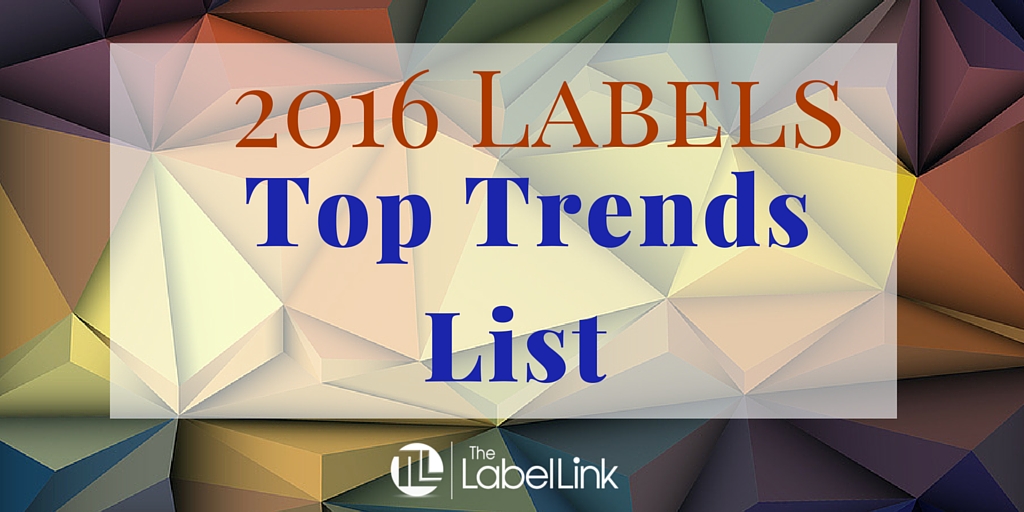
2016 Label Trends: What to Expect This Year
When a customer walks past your product in the store, what does she see? Do your labels look fresh and exciting? Do they capture her attention? Or are you making your product look outdated and boring with stale designs and labels?
If the latter is true, it’s probably time for a redesign. But before you uproot your old look, make sure you’re following some of this year’s 2016 label trends.
Although we’re well into 2016, there’s still a lot of time left in the New Year to make your products fly off the shelves. It’s no secret that we believe one of the best ways to get your customers interested in what you’re selling is to have a stand out label. Here are five trends you can expect to see more of your competitors using this year.
1. A Revolution in Mobile-Equipped Labels
A label is only as good as the package it’s placed on. This year, more packages will use mobile technology to reach out via mobile technology while customers walk by their products on the shelves.
In the past, mobile technology on a label has meant QR or text codes. Although these are still popular, they’re quickly becoming outdated because they are cumbersome to use.
Instead, many manufacturers are turning toward near-field communication (NFC) and bluetooth low-energy (BLE). These labels are known as “smart labels” because they provide brands with a wealth of information. For example, they don’t need to be scanned. Instead, they are automatically readable by using an app embedded on smartphones. All the customer has to do is tap and activate the content.
2. Clear Labeling
Clear labels don’t mean physically transparent labels (although some companies are letting the product show through).
Instead, the clear labeling trend means simplifying the ingredient list and clarifying with full transparency what the customer is buying.
This is especially important for food and beverage products, and personal care products. Consumers want to exactly what they’re putting into or onto their bodies. With the nutritional facts labels changing soon to give more transparency to what’s inside, label designers are following suit. Instead of using jargon to attract attention, designers are using clearer language and design to show consumers exactly what they will get when they buy the product.
3. A Digital Touch
Personalized labels really came to light when Coca-Cola started their campaign, “Share A Coke.” Budweiser attached NFL logos to their product packages to appeal to avid fans.
The reason for this personalization is clear: More brands are seeing products fly off the shelves when attaching names and titles to their products.
This is because consumers can relate to the product being sold, making it more appealing.
The trend is set to continue, which has helped make the way for improved digital printing.
Label printers are starting to use the lessons learned from the personalizing trend sparked last year to create more cost-effective printing options. Mainstream package decorations are getting to market faster, which means manufacturers are able to sell their goods to consumers faster and for more affordable pricing.
4. Essentialism
Another term for this is simplicity. In a world where consumers are less than trusting of marketers, brands are swapping out creative sales tactics with clear approaches. This extends onto the label design too.
This year, you’ll see more brands simplify the content and design on their packages. The frills will be swapped out for clarity (see point #2 to revisit why this is so important).
Instead of leaving a product’s purpose to the imagination, brands are using a more minimalistic design to point out just the essentials.
Tylenol is doing a great job of this. Their children’s care packaging states boldly and clearly exactly what their medication is to be used for. There’s very little design. Instead, the heavy text-based label shows exactly what a consumer will cure when taking their medication.
5. The Second Shelf
Ultimately, your customer isn’t only deciding whether or not to pick your product up off the shelf. She’s also trying to decide if she wants to put your product on her shelf at home.
The second shelf is the one that often gets ignored. This year, that will change.
More designers are paying attention to how products look on the shelf where they’re stored in the home. The idea is to turn product packaging into a statement piece in the home. For example, chocolate bars designed with handwritten packaging or vintage drawings could be reminiscent of the kind of candy you used to find in your grandma’s house. Or, it could trigger a conversation with guests.
By creating a design that makes the customer look good by having it on her shelf, you make your product more attractive.
Question: Which of these design trends will you follow this year?
2016 is the year of new technology in product packaging and new improvements in the way companies make their products appeal to passers by. If you’re prime for a new label design, following one of these tips can skyrocket your sales past the competition.
